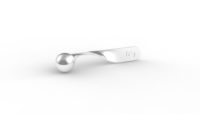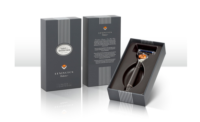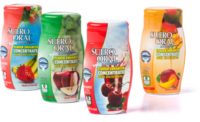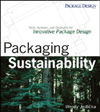Demographic changes, active lifestyles and a continuing trend toward sustainability are spurring development of innovative flexible packaging solutions that offer consumer goods manufacturers marketing opportunities in key sectors.
Seniors are a case in point. According to the American Association of Retired Persons (AARP), about 8,000 baby boomers retire every day, a rate that will continue until 2029. The U.S. National Institute on Aging forecasts that developed countries will see a 51 percent increase in the number of people aged 65 and older by 2030. While older may often be wiser, it is seldom stronger, and consumer goods packaging that this growing demographic once easily peeled or tore open can present a formidable challenge in later years.
Flexible packaging producers are responding to the rising senior population with innovations that make packaging easier to open, reclose and transport. The trend is seen in many applications, including food and beverages, cleaning and lawn care items.
Package design improvements range from laser scoring to extra-large pouch caps. Laser scoring creates tear notches and a seam in plastic bags that allow them to be opened with minimal effort. The scoring can be straight or curved to follow a product’s contours. Spouted pouches are increasingly made with large, easy-to-leverage caps, in diameters of 1¼ inches or more, that can be unscrewed with less effort than smaller caps.
Convenient built-in sliders and zip locks are serving multiple functions by protecting a package’s contents, preventing spoilage and preserving the freshness and flavors of packaged foods. The easy handling reclosable features allow seniors to economize and reduce waste in applications ranging from food to liquid detergents.
Adjustments in package size and configuration are also benefitting older consumers. Integrated handles facilitate easy carrying and smaller flexible pouches are replacing heavy buckets, jars and bags of pet food and lawn seed. Consumer goods packaged in lighter quantities and in easy-grip pouches are more easily transported from the car to the kitchen or basement.
One pet food manufacturer recently developed a new flexible plastic box with the help of its packaging supplier. The box, containing 6.6 pounds of premium dog food, is designed with a rounded shape at the top to resemble a woman’s handbag. A die cut opening at the top serves as a handle. Side gussets allow the box to expand easily when opened, while a built-in slider keeps the contents fresh after reclosing. Rotogravure printing produced a highly attractive appearance with matte, glossy and metalized effects.
Young Adults, Families
Consumer goods marketers likewise can leverage package design to cultivate younger demographics.
Young adults often prefer single-serving sizes and prepared foods like ready-to-eat salads that suit active lifestyles. These packaged products offer convenience, minimize meal preparation time and reduce food waste.
Flexible spouted pouches, which are an alternative to traditional glass jars in the packaging of baby food, are delivering convenience and safety benefits to young families. Young children can grip the flexible pouches, which can be equipped with choke-avoidance caps, and feed themselves under parental supervision. This frees parents of spoon-feeding and gives children more confidence and independence. The pouches’ large caps are designed for easy opening and handling by children. The caps’ size also deters swallowing. As a further precaution, the caps have a unique shape and structure that allows air to pass through, even if swallowed.
Sustainable Packaging
Sustainable flexible packaging options offer consumer goods marketers opportunities to appeal to environmentally conscious demographics while also reducing their own energy consumption and transportation costs. Here, flexible packaging, which weighs less and is easier to transport than rigid plastic packaging, is taking center stage. Consider that it takes 5 pounds of rigid plastic to package 60 pounds of beverages, compared with only 0.5 pounds of flexible plastic. A move from rigid to flexible packaging can save up to 50 percent of inbound transportation costs. Added benefits include more efficient use of pallets and warehouse space.
Consumers view labeling as highly credible and persuasive. From a marketing perspective, packaging carrying green labeling can make consumer goods more attractive to persons seeking sustainable product options.
Consumer goods packaging that meets the needs of highly defined market segments will evolve in the years ahead. Look for more imaginative changes in resealing, handling options and product protection to lead the way.
Mondi North America
(573) 335-4900
www.mondigroup.com










